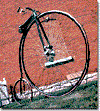
39. New Dimensions in Everyday Life

City life or country life? The typical farmer rose with the sun, tended the animals, worked the fields, broke bread with the family, and retired when the sun went down. With the exceptions of the Sabbath and holiday observances, life remained constant, changing only with the seasons.
While this bucolic lifestyle was and still is romanticized by many, it simply bore no resemblance to big city existence. The city promised conveniences, nightlife, excitement and variety. Despite its darker side, many were willing to sample cosmopolitan life. The contrast and struggle between rural and urban America raged throughout the last half of the 19th century. Although each side had its proponents, by 1900 one fact was clear. The city was winning.
Cities Change America
Urbanization brought greater change to postwar America than any other single factor. As America modernized, pressures to reform education from early childhood through adulthood brought marked improvements. Increased worker productivity and labor demands for a shorter work day enabled many urban residents to engage in newly popular sports and leisure activities unknown in the countryside.
Simply put, such a concentration of people enabled the flourishing of ideas and enterprises, from professional sports to elite clubs. The opportunities were there for the taking for those who had the means. Metropolitan residents became more worldly as they had greater access to the explosion of new forms of printed materials such as more extensive newspapers and a wider variety of periodicals.
City life also redefined gender roles. The average size of the American family dropped from seven children in 1800 to approximately four a century later. Crude birth control methods contributed somewhat to this decline, but large families simply were not as desirable in the city as on the farm. A farm child promised additional agricultural labor, but an urban child was simply an extra mouth to feed.
As women slowly became more educated and independent, traditional Victorian values were challenged. New jobs were available in the city, especially for single women. Demands for national reform such as prohibition of alcohol, regulation of child labor, and the right to vote were brought into public discourse by educated women.
Daily life was changed forever. Although the rural population of America remained an absolute majority until 1920, city life permeated American culture. Critics condemned the slums and vices of urban life, but the cities grew and grew as the American farmer struggled for survival.





